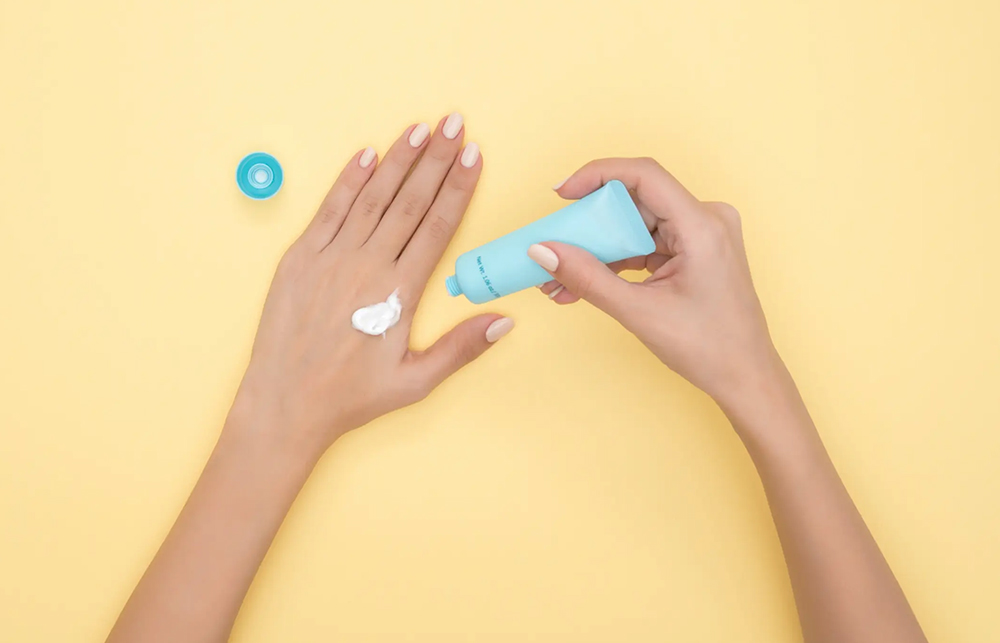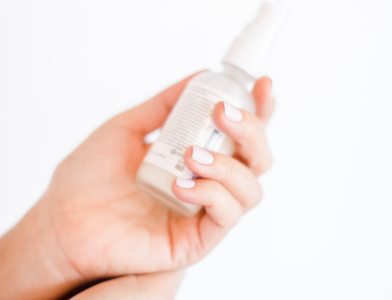Recently there have been viral social media posts about the possibility of synthetic sunscreen ingredients causing seizures in children. Although the causative link has yet to be established, the purpose of this article is to provide evidence-based scientific information from a toxicological and safety perspective on octisalate so you as consumers can make healthy, informed product choices for your family. You’ll also find my top 10 toxin-free sunscreen suggestions that I personally use for my family.
Background and History
Since the 1970’s sunscreen ingredients have been regulated as drugs by the US FDA and the Sunscreen Innovation Act was passed in 2014 to allow chemical manufacturers to get sunscreen chemicals approved for use without going through the New Drug Application process. With the new Act, the FDA requires human skin safety studies such as sensitization and irritation in addition to measuring how much is absorbed through the skin into the bloodstream. Carcinogenicity, developmental and reproductive studies will also be required, and when taken altogether, these studies generally give an adequate basis to form safety judgements for human health. However, ecotoxicity studies have not been mentioned in the requirements to register new synthetic sunscreen ingredients, which given their widespread use, could prove to be useful in protecting the environment. Hawaii has recently banned the sale of oxybenzone and octinoxate without a prescription, which will go into effect in 2021, due to the widespread accumulation and pollution of oceans by these synthetic sunscreen ingredients (1).
The key to remember is that safety studies will be conducted on the synthetic sunscreen ingredients on their own and not on the final product, which can include a multitude of other ingredients that may have toxic & undesired effects. Therefore, choosing sunscreens made with natural & naturally-derived, plant-based, and organic ingredients that are biodegradable with a known history of safe human use reduces the likelihood of toxicity to people and the environment.
Safety Assessment of Octisalate
Chemical Identity
Octisalate, also known as 2-ethylhexyl salicylate, is used as a UVB filter in many commercially available sunscreen preparations and also as a fragrance ingredient.
Toxicological Findings
Routes of Exposure
The primary route of exposure is through the skin with the potential to be exposed through the mouth through ingestion of contaminated foods such as fish (2), eating & drinking with sunscreen applied on the hands or lips, and the potential for inhalation of aerosol or spray sunscreens.
Toxicity Studies
Octisalate causes allergic contact dermatitis (3-5), which is a form of dermatitis caused by an allergic reaction. Dermatitis is an inflammatory response of the skin and it is common to use a product for prolonged periods without incident only to suddenly experience allergic reactions, which can include swelling, rash, redness, and hives.
Absorption Into the Body
A human study showed that octisalate and 5 other synthetic sunscreen ingredients were absorbed through the skin into the bloodstream at levels that exceeded FDA safe limits (6). Another study showed the potential for synthetic sunscreen ingredients to accumulate in the skin and slowly release into the bloodstream potentially reaching toxic levels (7). Does octisalate accumulate in the body? If so, there may be reason for concern about exposure to high amounts
Distribution in the Environment
Several related synthetic sunscreen ingredients have been detected in swimming pools, lakes, wastewater, and fish samples (8-10). Octisalate was detected in water, sediment, and coral tissue in Oahu, Hawaii (11), aquatic plants (12), and rivers in Korea (13)
Use as a Drug
There is evidence that octisalate may be useful in stopping the progression of MS, and may provide new insight into mechanisms of controlling autoimmune disease (14). Should it continue to be regulated as a drug given its effects on the immune system?
Potential for Neurotoxicity & Endocrine Disruption
Related synthetic sunscreen ingredients such as octinoxate, have neurotoxic and endocrine-disrupting effects. Specifically, octinoxate may decrease motor activity & spatial learning (15), disrupt pituitary and thyroid function (16), and impair the release of neurotransmitters (16-17). Based on my extensive experience with computational toxicology and structure-activity-relationship analysis, it is reasonable to hypothesize that since octisalate has a similar chemical structure to octinoxate, that it may have similar effects on the nervous and endocrine systems though further studies are needed to confirm this hypothesis.
Summary & Conclusions
The major concerns with octisalate are that it causes allergic contact dermatitis and it’s not known if it bio-accumulates in the body. Given that this material has widespread distribution in the environment with detectable levels in fish, coral, aquatic plants, and swimming pools, it is possible that we are being exposed to more than just the amount we are directly applying to our skin. When we take into account that sunscreens may be used liberally for consecutive days with the potential for bio-accumulation and the exposure from multiple sources, it is possible that some individuals may be exceeding safe levels and overwhelming the body’s natural detoxification systems. Moreover, since children have lower body weight than adults, the relative exposure in a child is much greater and requires much less to cause toxicity. Taken together, the safe limits and use levels of octisalate need further investigation.
There are limited studies on the direct health effects of octisalate and some studies showing the neurotoxicity and endocrine-disrupting effects of octinoxate in animals. Given that these materials are chemically similar, it is possible that they may have similar health effects. While there are no published studies on the direct neurological effects of these materials in children, the absence of data and potential for exposure exceeding safe limits warrants further study on the neurotoxic effects of these synthetic sunscreen ingredients.
Suggestions for Toxin-Free Mineral Sunscreen
Synthetic sunscreens carry the risk of causing toxicity to human and environmental health. Non-nanoparticle mineral sunscreens have low toxicity and have been proven to be effective at protecting against UV-induced skin damage by providing a physical barrier against the sun. Here are my suggestions for toxin-free mineral sunscreens that I chose based on whether the ingredients contain: mineral-based active sunscreens (non-nanoparticle zinc or titanium oxide), organic, natural or naturally-derived, sourced from plants, minimally-processed, little or no synthetics, and minimal synthetic preservatives. The idea is to look for products that are made with wholesome ingredients for the most healthy & eco-friendly option.
*Disclosure: this page contains affiliate links
Sunscreen Sticks
Excellent for swiping on faces especially little ones. Consult your healthcare provider for children under the age of 6 months.
Sunscreen Creams
Excellent for covering the entire body. It is recommended to re-apply every 60-80 minutes and after coming out of the water. Consult your healthcare provider for children under the age of 6 months.
Subscribe to The Toxicology Mama email list to be the first to know when Dr. Yvonne shares a new blog post and adds more product recommendations!
References
1) Hawaii State Legislature. 2018. SB2571 SD2 HD2 CD1.
Barbosa V, Maulvault AL, Alves RN, et al. Effects of steaming on contaminants of emerging concern levels in seafood. Food Chem Toxicol. 2018;118:490-504. doi:10.1016/j.fct.2018.05.047
2) Shaw DW. Allergic contact dermatitis from octisalate and cis-3-hexenyl salicylate. Dermatitis. 2006;17(3):152-155. doi:10.2310/6620.2006.05046
3) Mortz CG, Thormann H, Goossens A, Andersen KE. Allergic contact dermatitis from ethylhexyl salicylate and other salicylates. Dermatitis. 2010;21(2):E7-E10.
4) Dens AC, Goossens A, Darcis J, Huygens S, Lambrecht C, Gilissen L. Allergic contact dermatitis caused by ethylhexyl salicylate with possible cross-reactivity with benzyl salicylate. Contact Dermatitis. 2019;81(4):317-318. doi:10.1111/cod.13308
5) Matta MK, Florian J, Zusterzeel R, et al. Effect of Sunscreen Application on Plasma Concentration of Sunscreen Active Ingredients: A Randomized Clinical Trial [published correction appears in JAMA. 2020 Mar 17;323(11):1098]. JAMA. 2020;323(3):256-267. doi:10.1001/jama.2019.20747
6) Hiller J, Klotz K, Meyer S, et al. Systemic availability of lipophilic organic UV filters through dermal sunscreen exposure. Environ Int. 2019;132:105068. doi:10.1016/j.envint.2019.105068
7) Balmer ME, Buser HR, Müller MD, Poiger T. Occurrence of some organic UV filters in wastewater, in surface waters, and in fish from Swiss Lakes. Environ Sci Technol. 2005;39(4):953-962. doi:10.1021/es040055r
8) Ekowati Y, Buttiglieri G, Ferrero G, et al. Occurrence of pharmaceuticals and UV filters in swimming pools and spas. Environ Sci Pollut Res Int. 2016;23(14):14431-14441. doi:10.1007/s11356-016-6560-1
9) Cunha SC, Trabalón L, Jacobs S, et al. UV-filters and musk fragrances in seafood commercialized in Europe Union: Occurrence, risk and exposure assessment. Environ Res. 2018;161:399-408. doi:10.1016/j.envres.2017.11.015
10) Mitchelmore CL, He K, Gonsior M, et al. Occurrence and distribution of UV-filters and other anthropogenic contaminants in coastal surface water, sediment, and coral tissue from Hawaii. Sci Total Environ. 2019;670:398-410. doi:10.1016/j.scitotenv.2019.03.034
11) Seyer A, Mlynek F, Himmelsbach M, Buchberger W, Klampfl CW. Investigations on the uptake and transformation of sunscreen ingredients in duckweed (Lemna gibba) and Cyperus alternifolius using high-performance liquid chromatography drift-tube ion-mobility quadrupole time-of-flight mass spectrometry. J Chromatogr A. 2020;1613:460673. doi:10.1016/j.chroma.2019.460673
12) Ekpeghere KI, Kim UJ, O SH, Kim HY, Oh JE. Distribution and seasonal occurrence of UV filters in rivers and wastewater treatment plants in Korea. Sci Total Environ. 2016;542(Pt A):121-128. doi:10.1016/j.scitotenv.2015.10.033
13) Wang Y, Marling SJ, Plum LA, DeLuca HF. Salate derivatives found in sunscreens block experimental autoimmune encephalomyelitis in mice. Proc Natl Acad Sci U S A. 2017;114(32):8528-8531. doi:10.1073/pnas.1703995114
14) Axelstad M, Boberg J, Hougaard KS, et al. Effects of pre- and postnatal exposure to the UV-filter octyl methoxycinnamate (OMC) on the reproductive, auditory and neurological development of rat offspring. Toxicol Appl Pharmacol. 2011;250(3):278-290. doi:10.1016/j.taap.2010.10.031
15) Klammer H, Schlecht C, Wuttke W, et al. Effects of a 5-day treatment with the UV-filter octyl-methoxycinnamate (OMC) on the function of the hypothalamo-pituitary-thyroid function in rats. Toxicology. 2007;238(2-3):192-199. doi:10.1016/j.tox.2007.06.088
16) Carbone S, Szwarcfarb B, Reynoso R, et al. In vitro effect of octyl – methoxycinnamate (OMC) on the release of Gn-RH and amino acid neurotransmitters by hypothalamus of adult rats. Exp Clin Endocrinol Diabetes. 2010;118(5):298-303. doi:10.1055/s-0029-1224153
17) Ruszkiewicz JA, Pinkas A, Ferrer B, Peres TV, Tsatsakis A, Aschner M. Neurotoxic effect of active ingredients in sunscreen products, a contemporary review. Toxicol Rep. 2017;4:245-259. Published 2017 May 27. doi:10.1016/j.toxrep.2017.05.006












